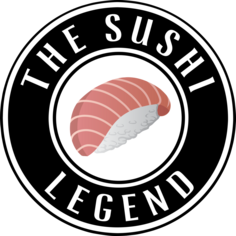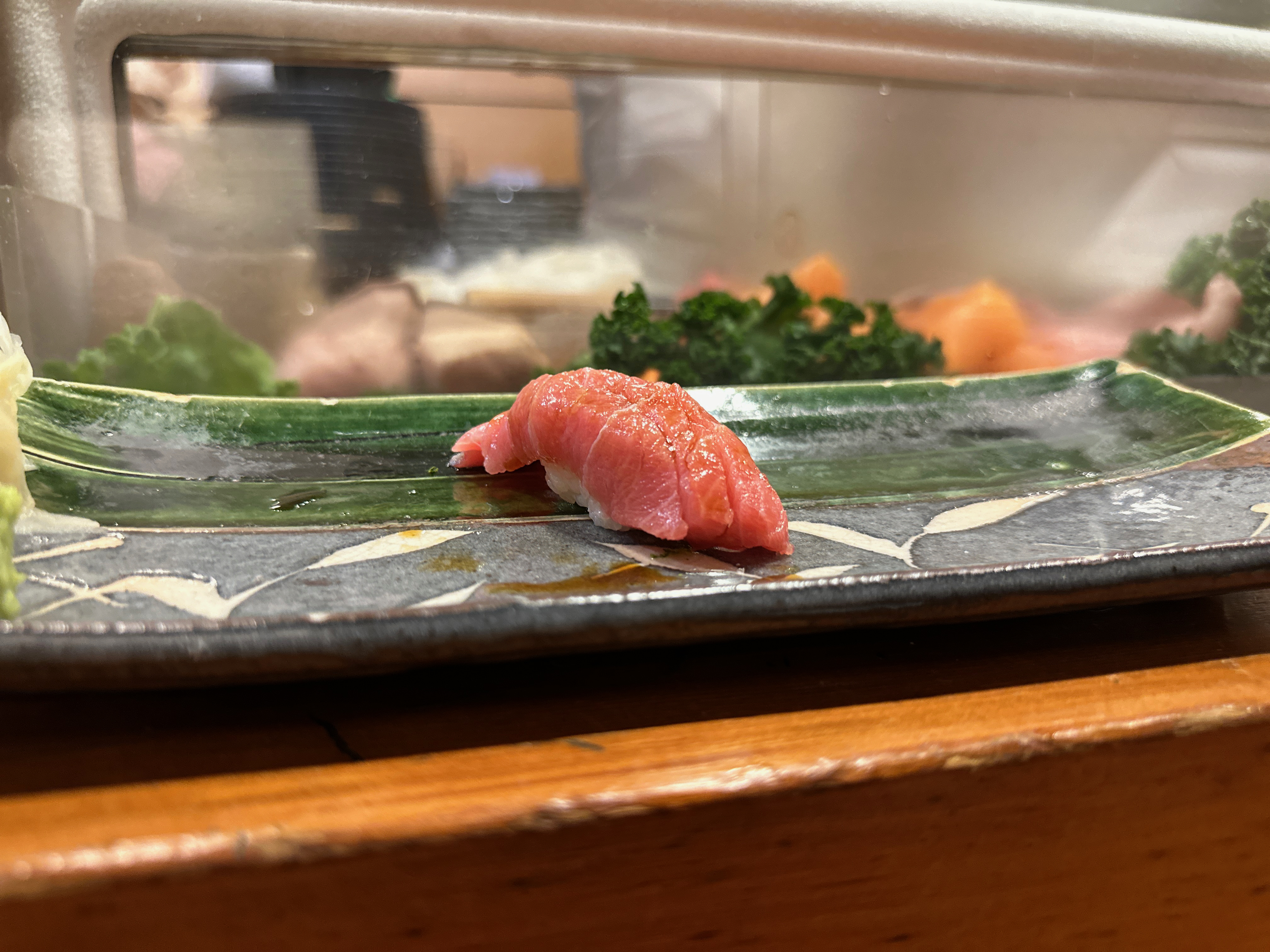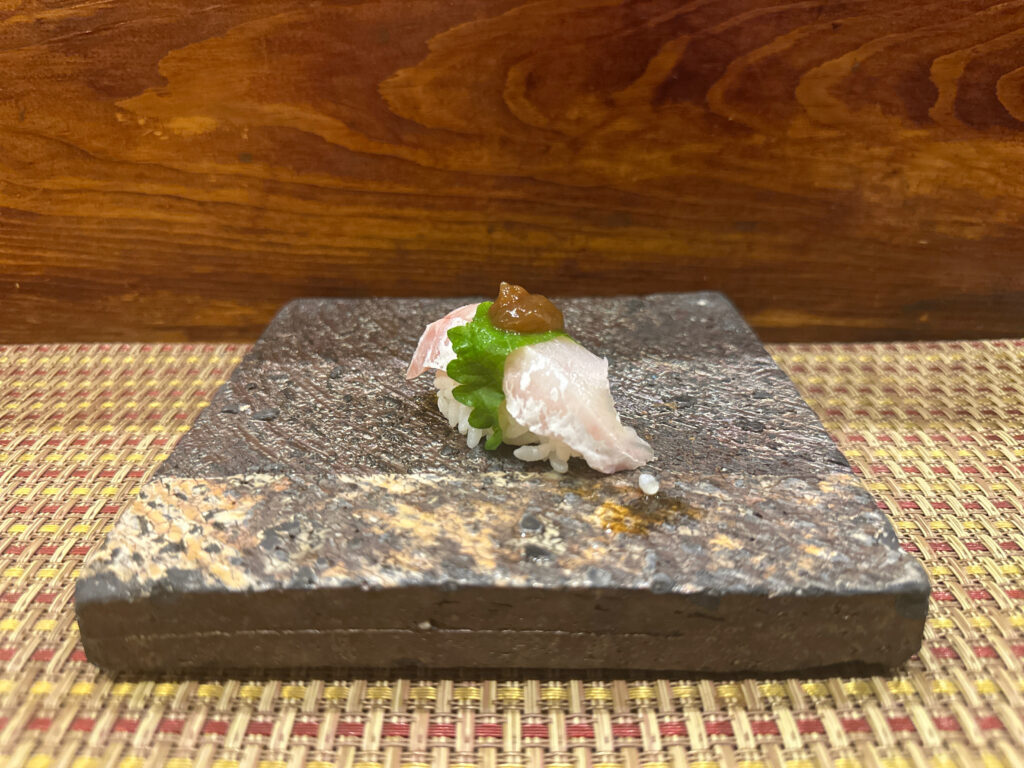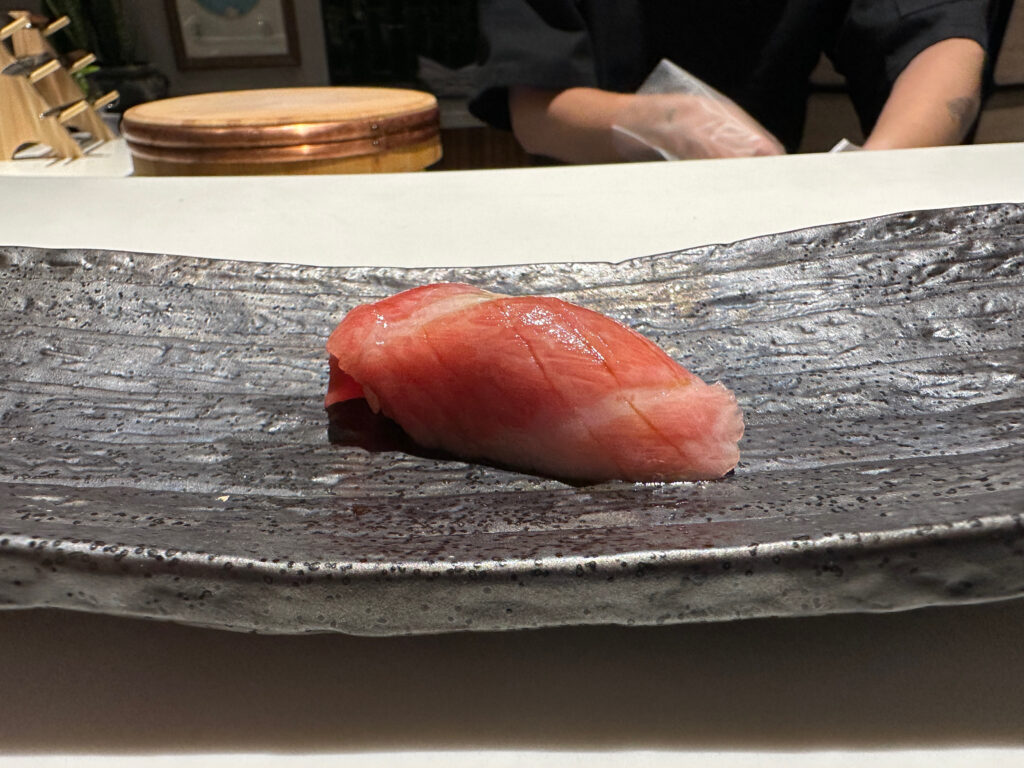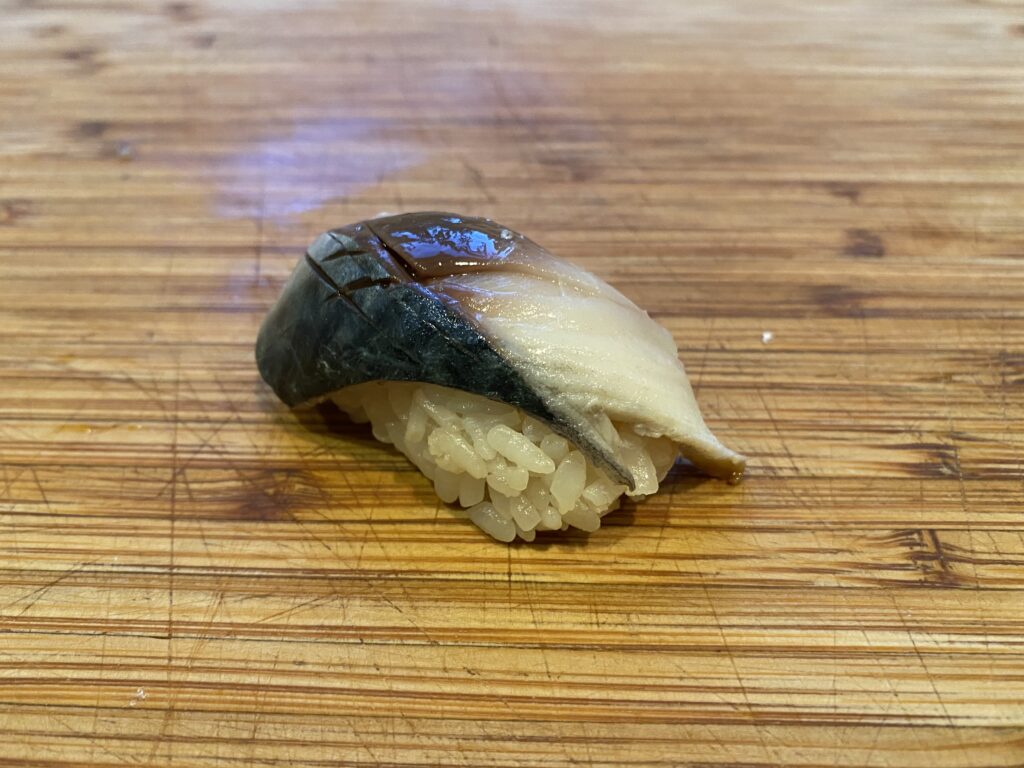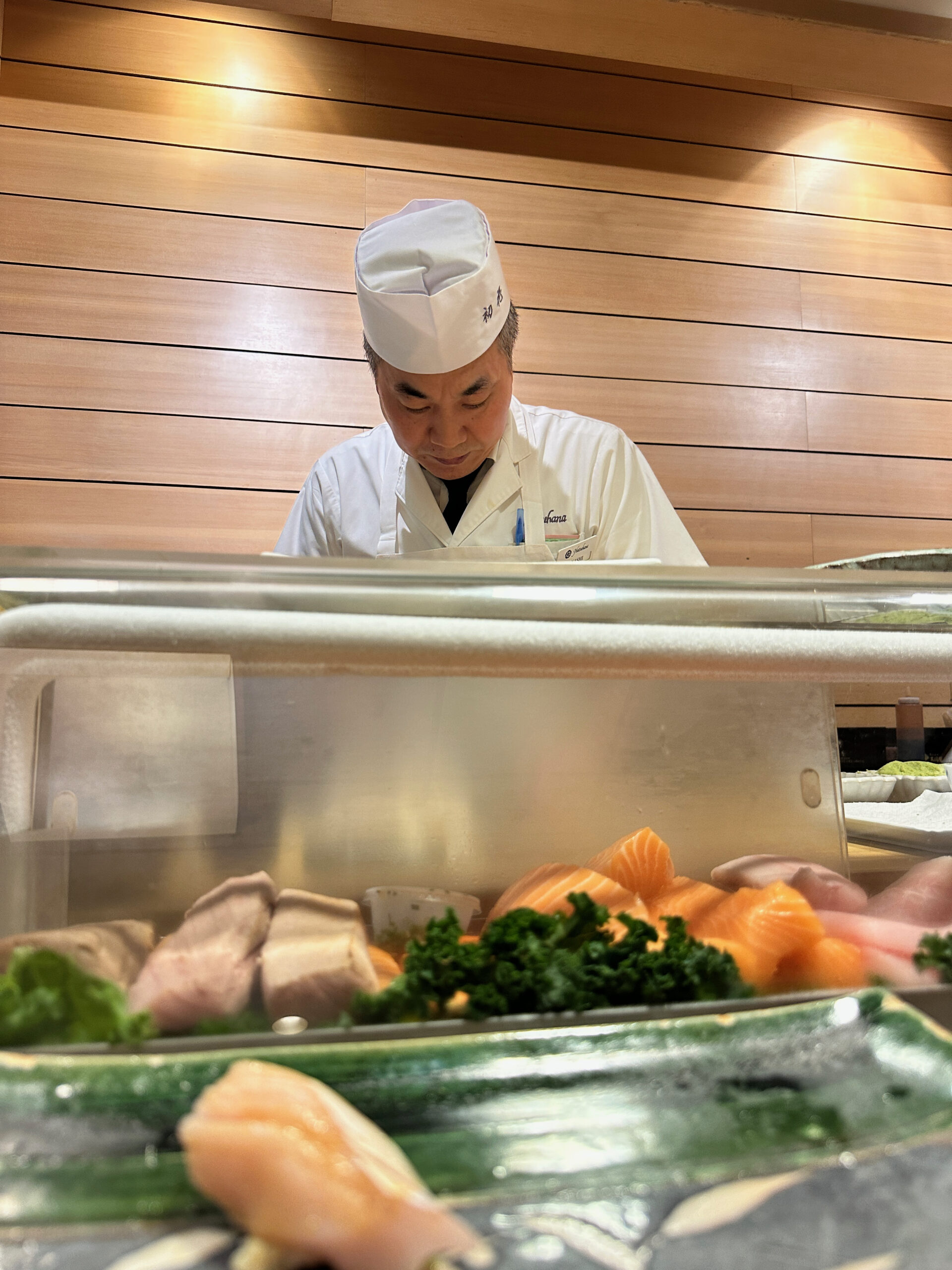 As the New York City sushi scene has expanded faster than that blueberry girl from Willy Wonka, it’s sometimes easier to overlook longtime city staples. I like flashy new things. Sue me (please don’t).
As the New York City sushi scene has expanded faster than that blueberry girl from Willy Wonka, it’s sometimes easier to overlook longtime city staples. I like flashy new things. Sue me (please don’t).
But recently, I’ve begun to – !!BUSINESS JARGON ALERT!! – circle back to a few classics. Turns out, it had been 11 years since I visited Kanoyama, but the sushi is still excellent (recent review here). And it had been 10 long years since my then girlfriend, now wife, took me to Hatsuhana in midtown New York City.
A return visit was long overdue
That’s because Hatsuhana is woven into the city’s sushi fabric. This sushiya opened in 1976. 1976! No offense to anyone who was alive back then (cough my brother cough) but that was a long time ago. That’s the year Microsoft and Apple were founded, Canada won the first Canada Cup, and not much else. But still.
It’s the second oldest Japanese restaurant in NYC behind Restaurant Nippon, and probably the oldest sushiya.
Given that, the name – Hatsu Hana translates as the first spring flowers” – resonates even more.
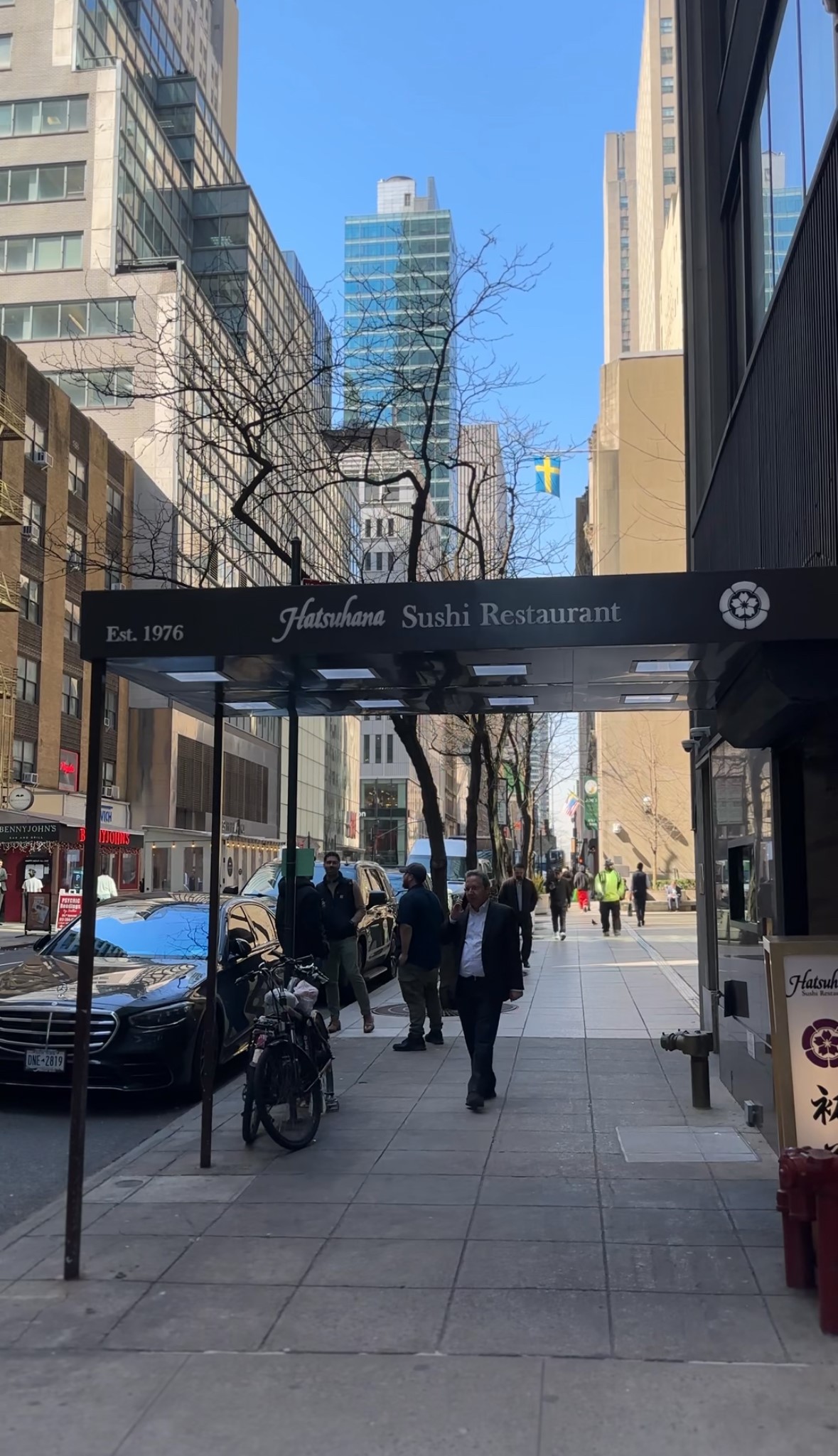
Outside Hatsuhana
This is massive sushiya
Hatsuhana’s midtown space is two floors, and it’s large. Downstairs, a smattering of tables. Upstairs, many more tables, and a long sushi counter.
Though it’s open all day, lunch hours are the busiest. Reservations are necessary, but here’s a little extra Sushi Legend tip: call before (11ish) or after (3ish) to ensure someone answers. And do it three days in advance; this is a popular spot with Japanese ex-pats and midtown cube monkeys alike. Every white collar law firm executive assistant in New York City is blowing up the phone lines.

Upstairs at Hatsuhana during lunch
But what makes it so popular?
It’s not just the quality and variety of the sushi, which I’ll touch on momentarily. It’s the vibe. I didn’t visit many sushiya in the 90s because I was freebasing Power Rangers and Thomas the Tank Engine, but I imagine this is what high-end sushiya from back then were like. And Nostalgia is great, no matter what your therapist tells you.
Beyond the aesthetic, a team of super soldier sushi shokunin (say that ten times fast) make the 16 counter seats especially coveted. Omakase is not required, but is it recommend. And the style is a little different than most New York City sushiya, a welcome change.

We sat at the counter with Hayashi
That’s because Hatsuhana keeps serving until forever
Interestingly, the counter doesn’t actually require Omakase. Me and my dining partner – a friend from Toronto who brings me Ice Wine every visit like a Summit Heights Santa – were one of the few. Unlike Kanoyama, which spent two hours serving elaborate (and mostly forgettable) otsumami before getting to the sushi, Hatsuhana is nigiri only.
And as an entrenched sushiya serving a variety of tastebuds, they have enough different Neta to go for a long time, though the meal lasts barely an hour. As it should.
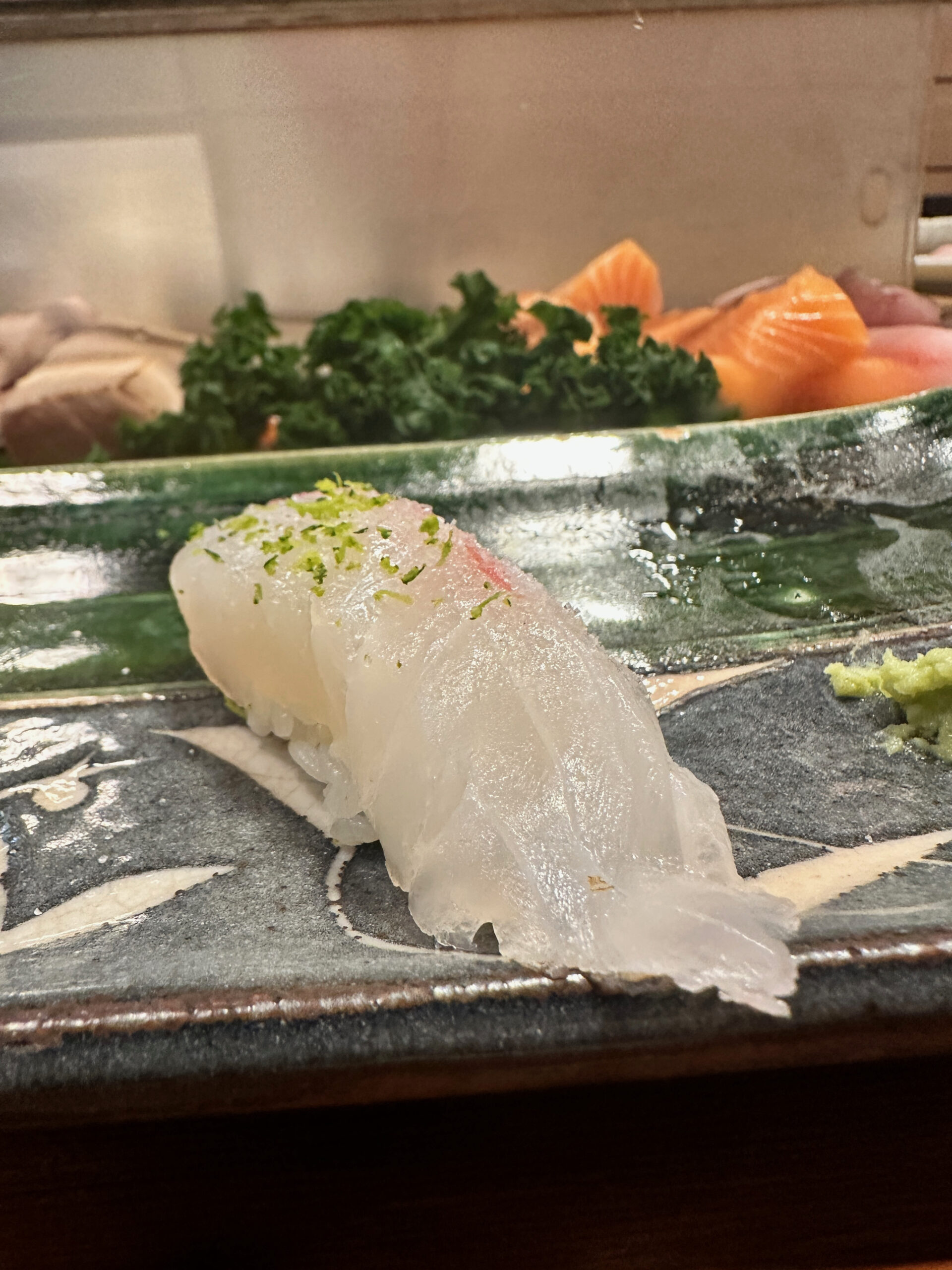
1: Madai
Let’s get this out of the way early
Some of the nigiri at Hatsuhana isn’t the prettiest. If you’re expecting something straight from Edomae Sushi, arguably the greatest book on the subject, you’ll be disappointed (quick plug for my list of sushi books here).
But I’m not sure that matters. Sushi here is about two things: the quality, and variety, of the fish.
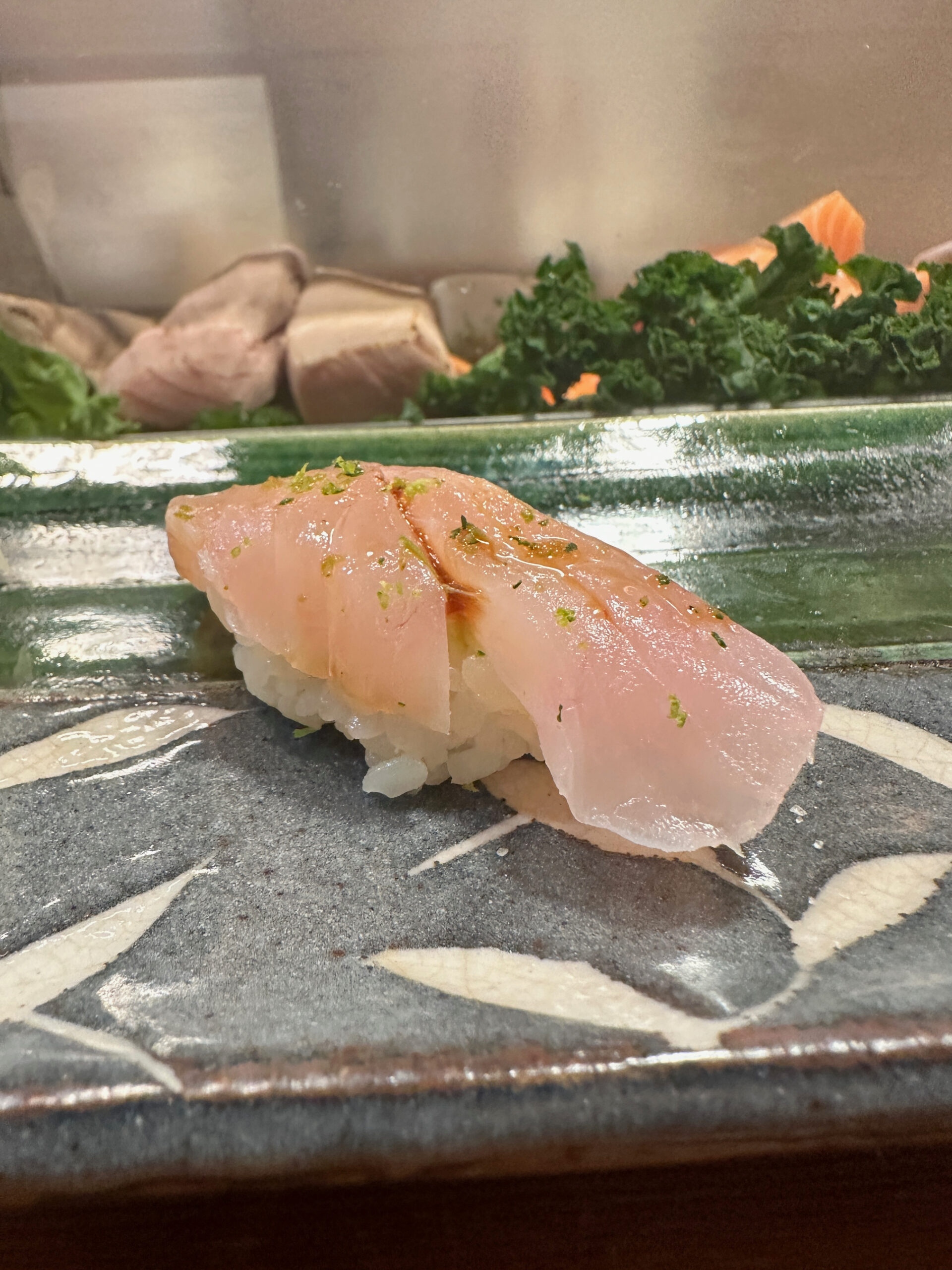
2: Kinmedai
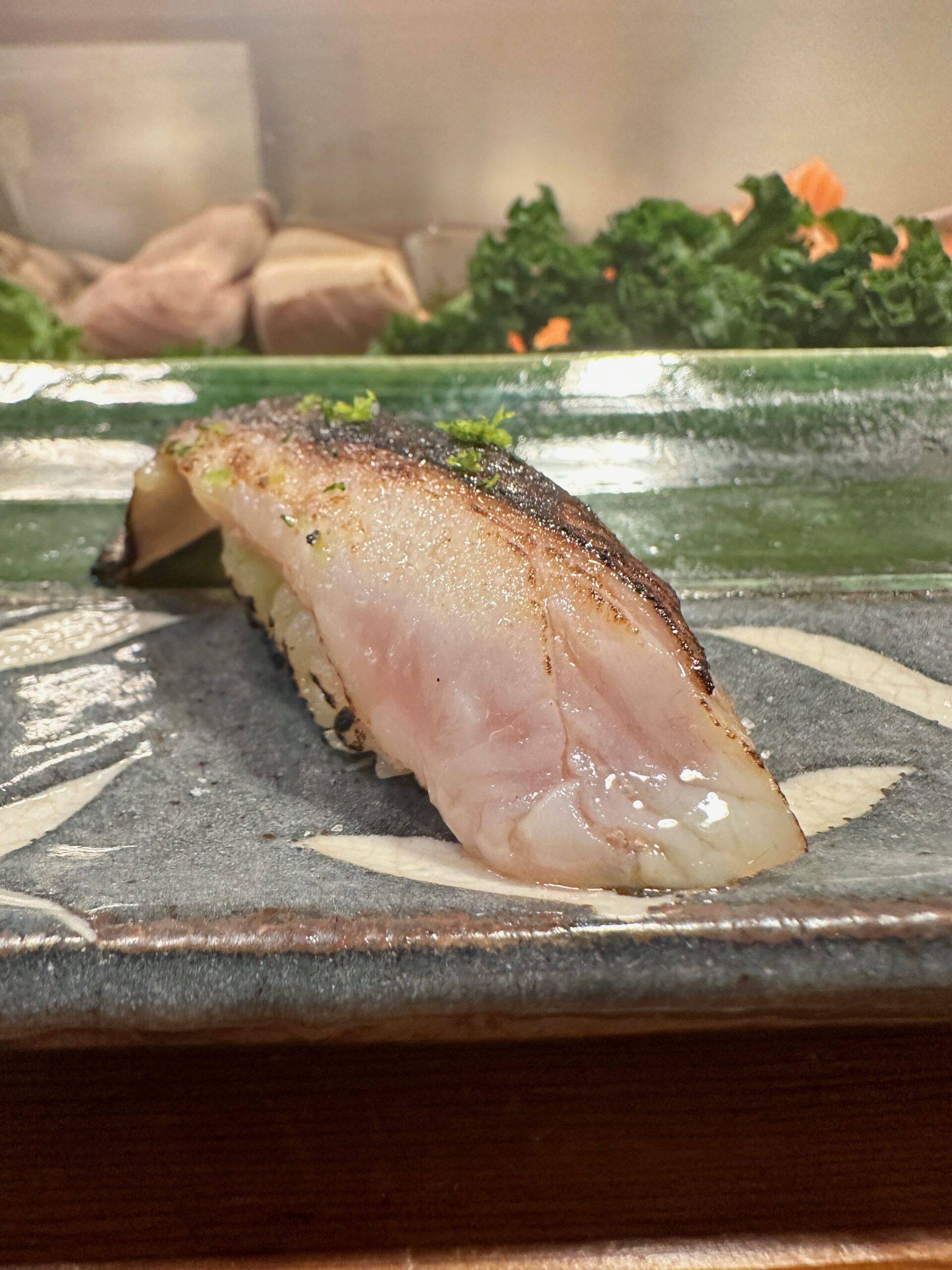
3: Akamatsu
Courses 4 and 5 are cases in point
If you’re going to offer a “tell us when to stop” Omakase, you better have more than just the standard kinmedai, shima aji, maguro, sake “axis of eh”. And there Hatsuhana succeeds in spades.
First, Kinki (channel rockfish), typically a winter shiromi (white fleshed fish), is served Aburi. A rare but welcome sight.
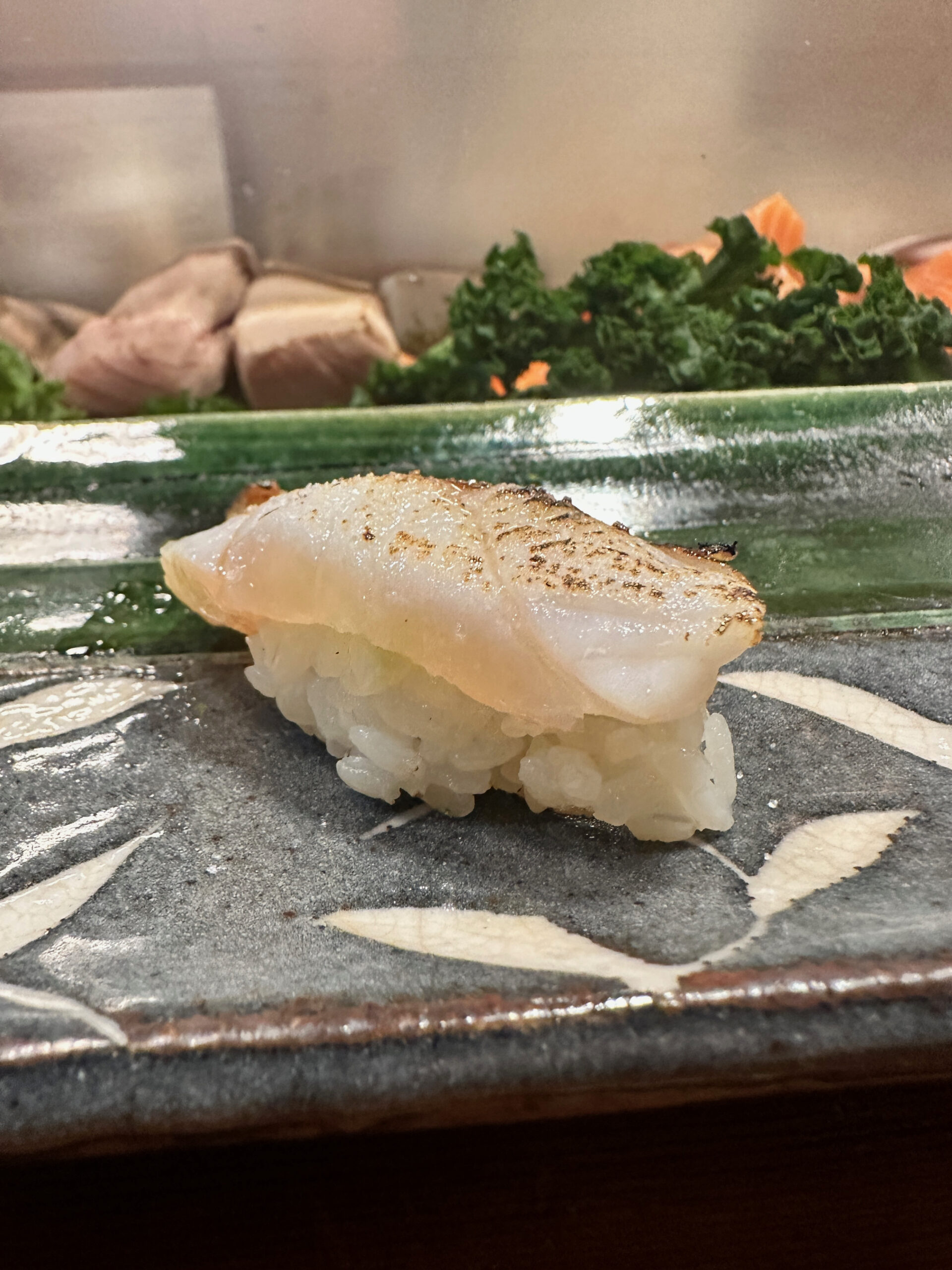
4: Kinki Aburi
Then, Isaki (Chicken Grunt), another shiromi and one of my favourite neta, not just for the english name, though I’d be lying if I said that didn’t factor. And I never lie. It’s best in June, but I wasn’t complaining, even if the typical reddish hue was more muted.
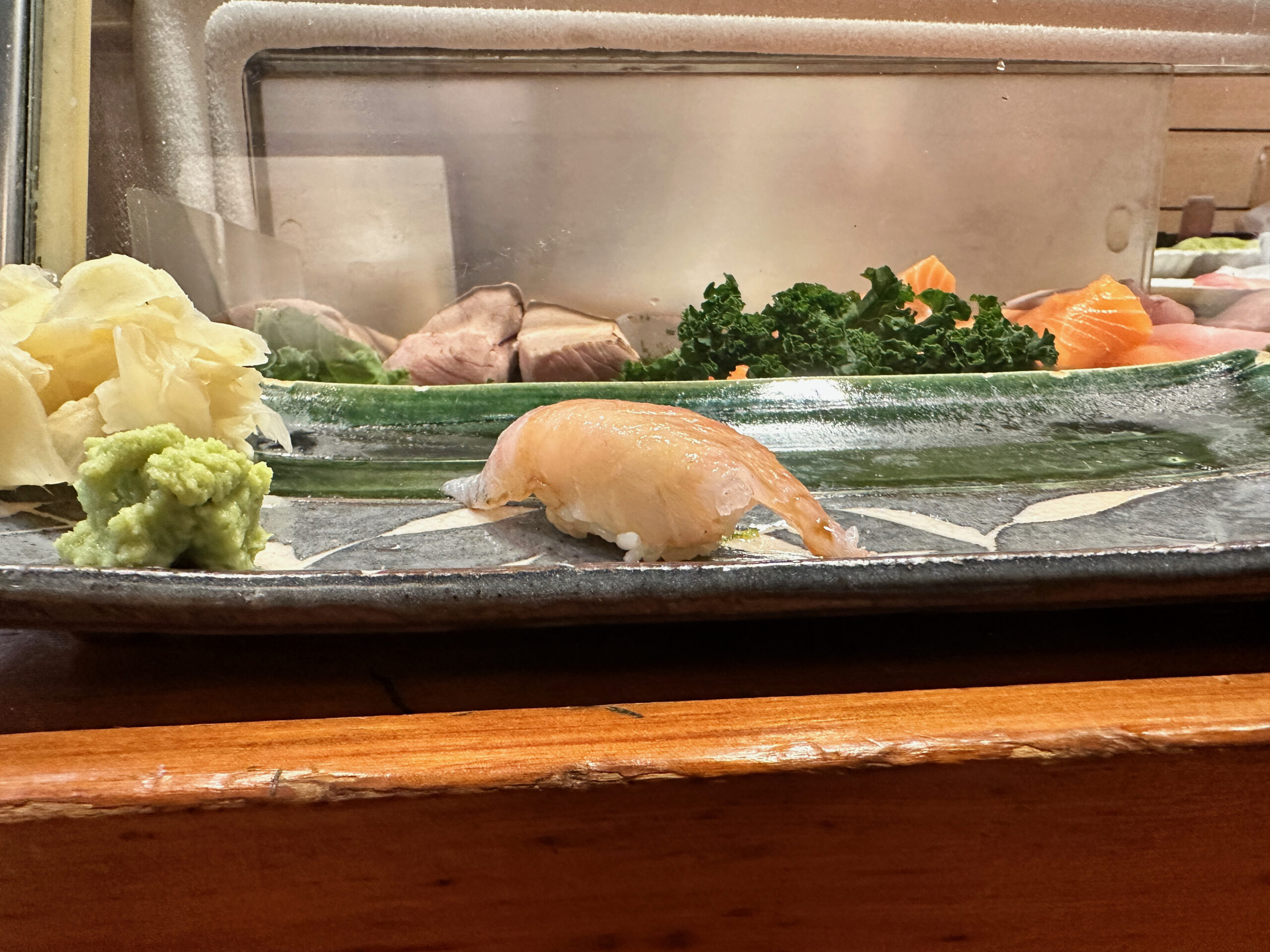
5: Isaki

Another angle
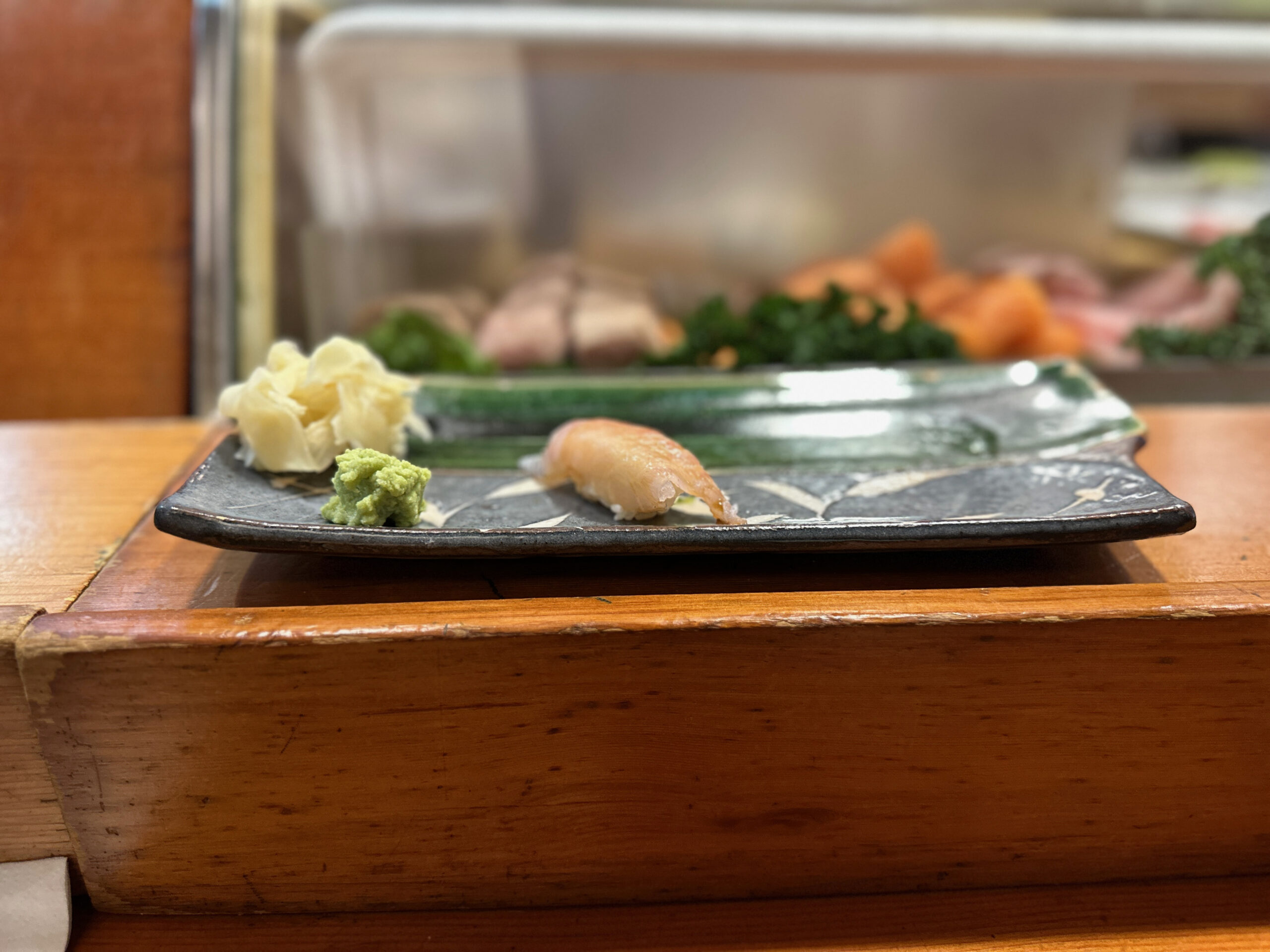
Another angle of the Isaki. I need lessons on portrait mode. The phone thinks Wasabi is the star.
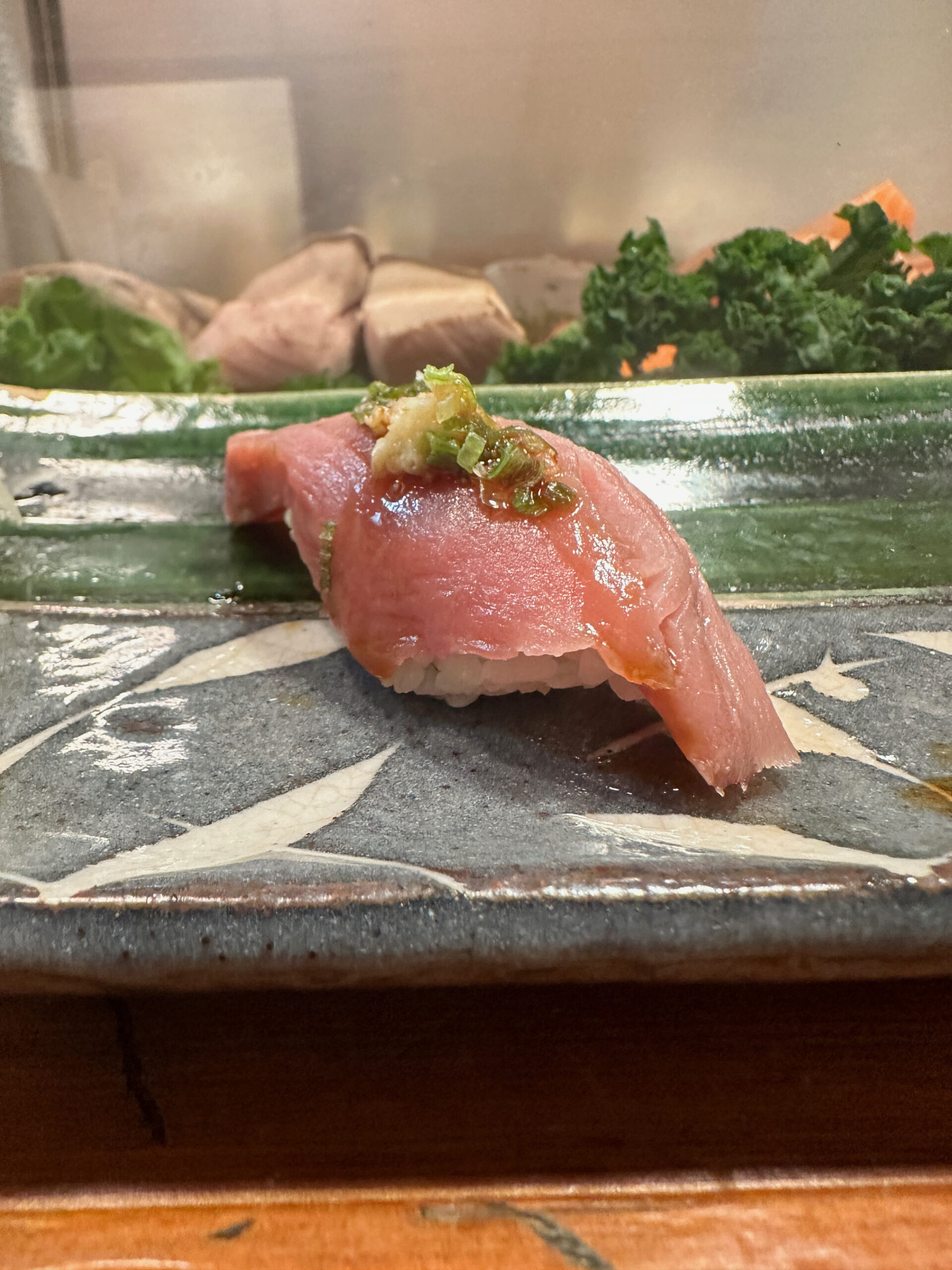
6: Katsuo
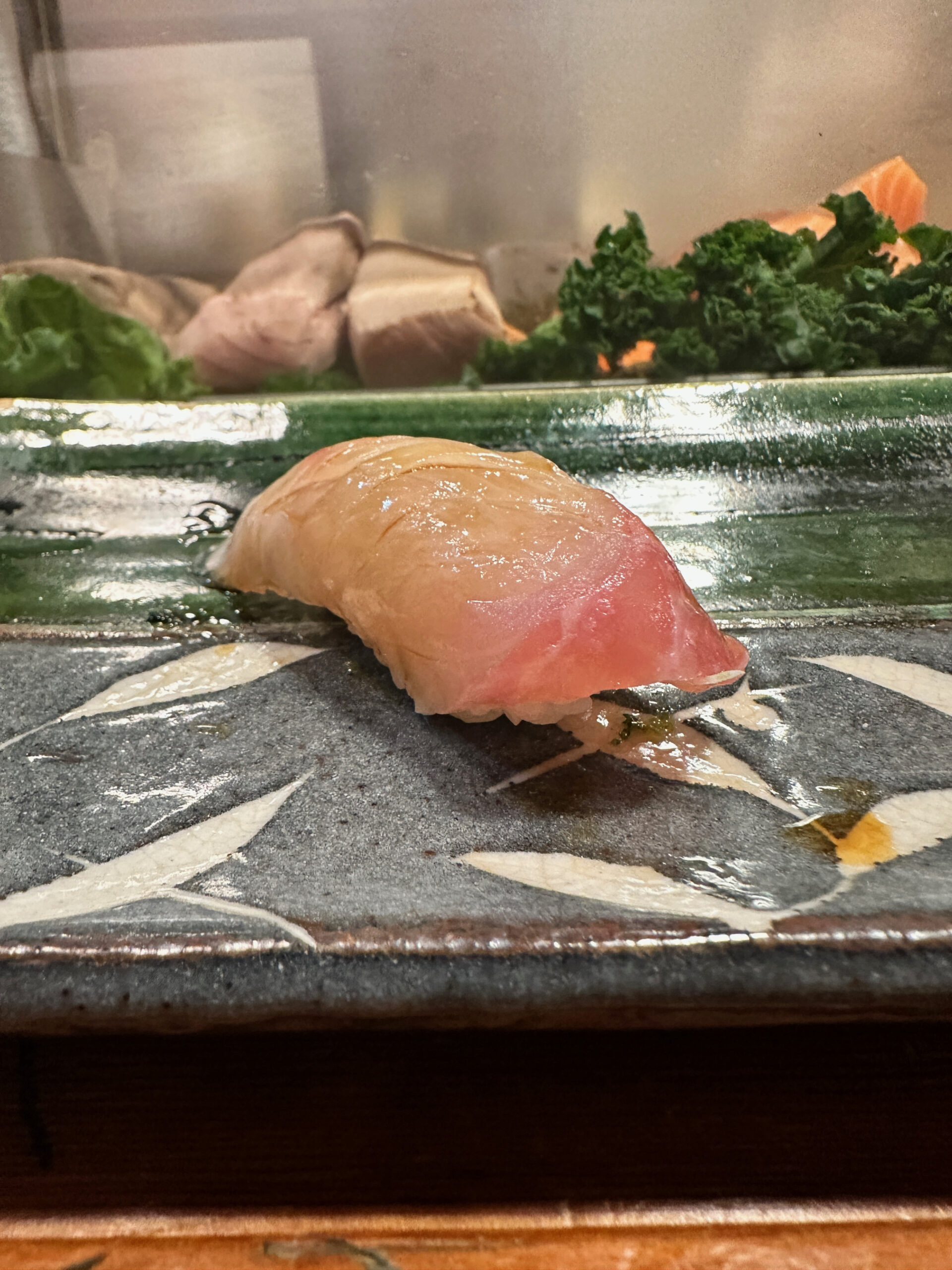
7: Shima Aji
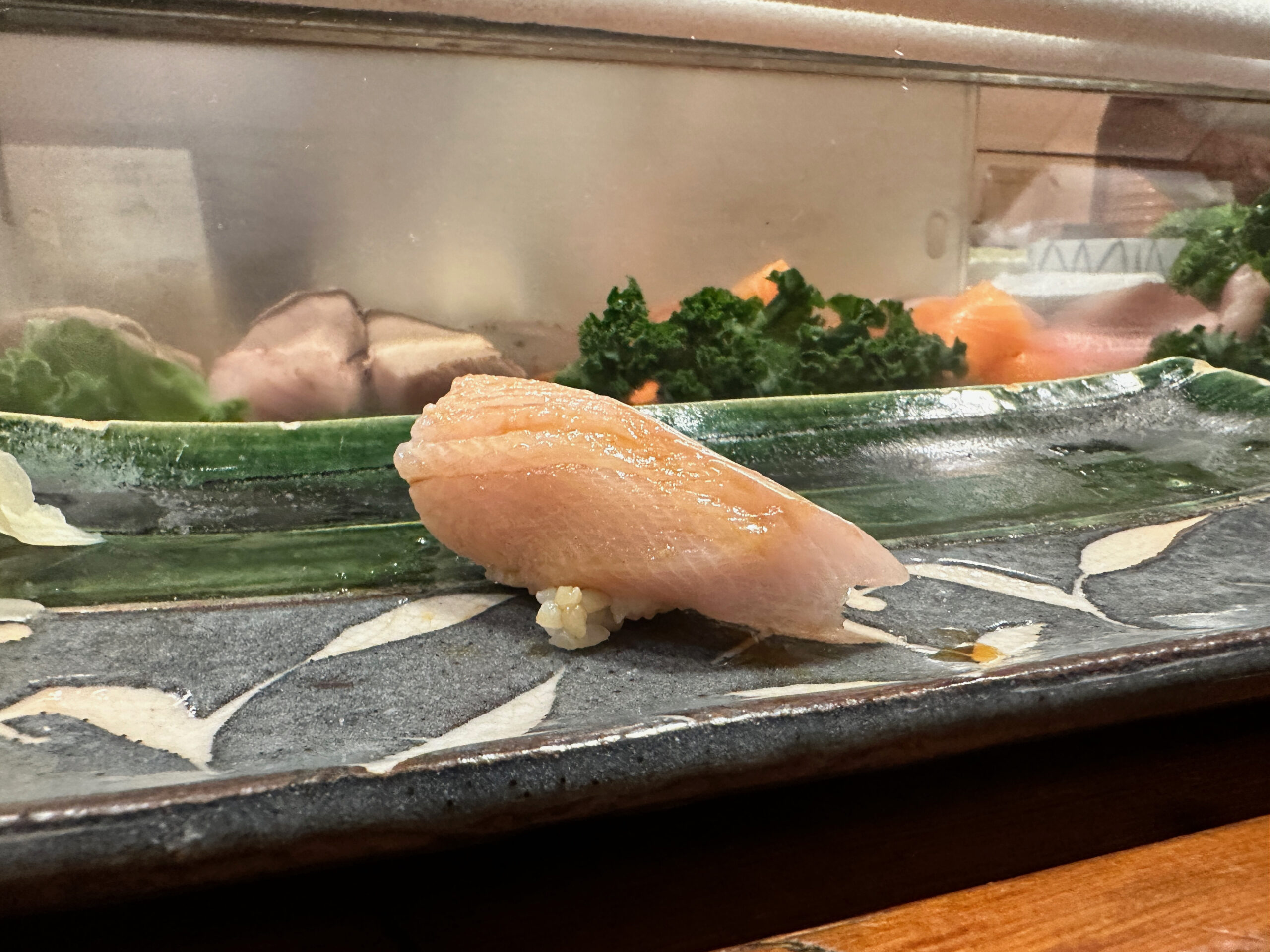
8: Hamachi
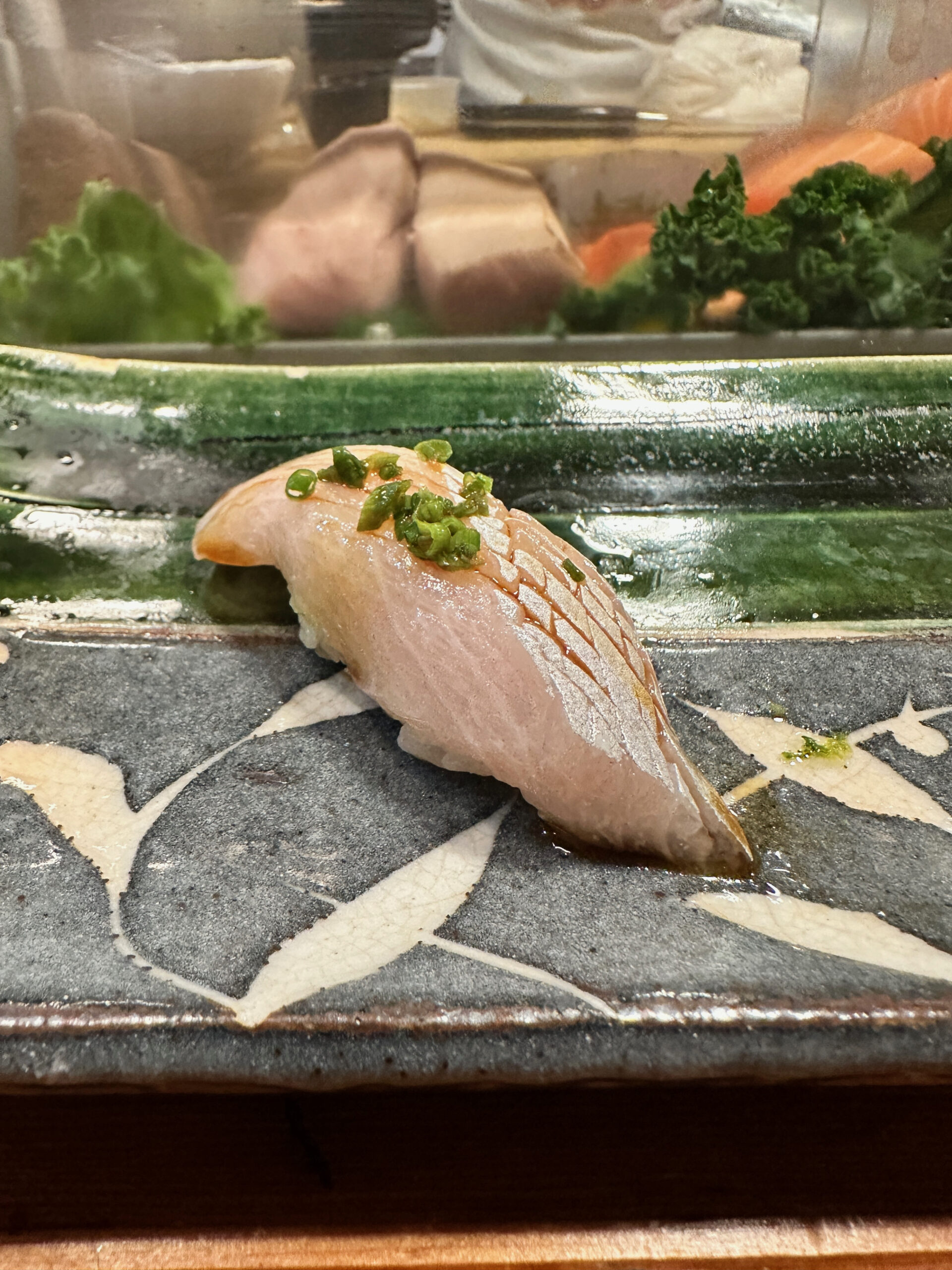
9: Kanpachi
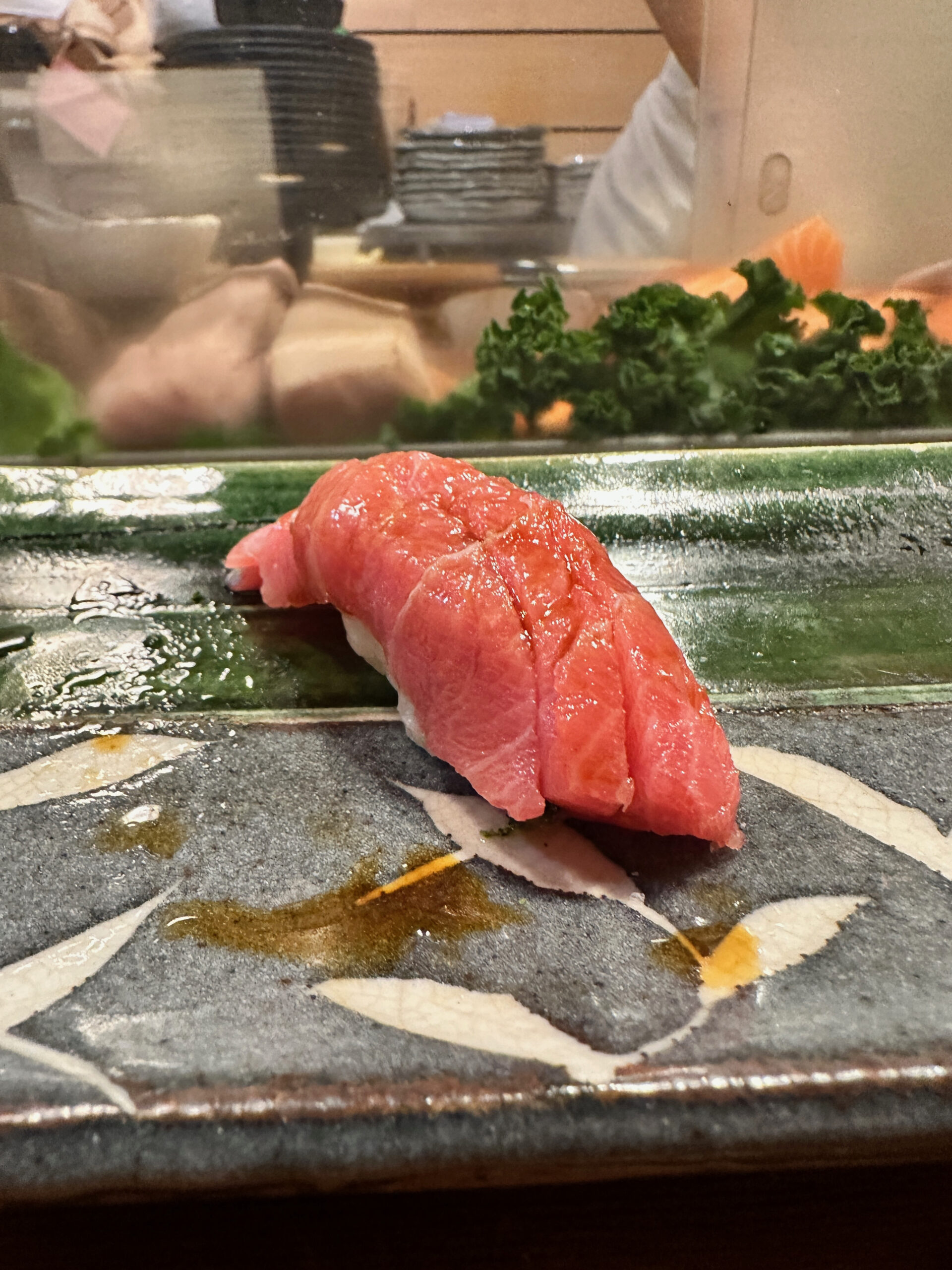
10: Chu Toro
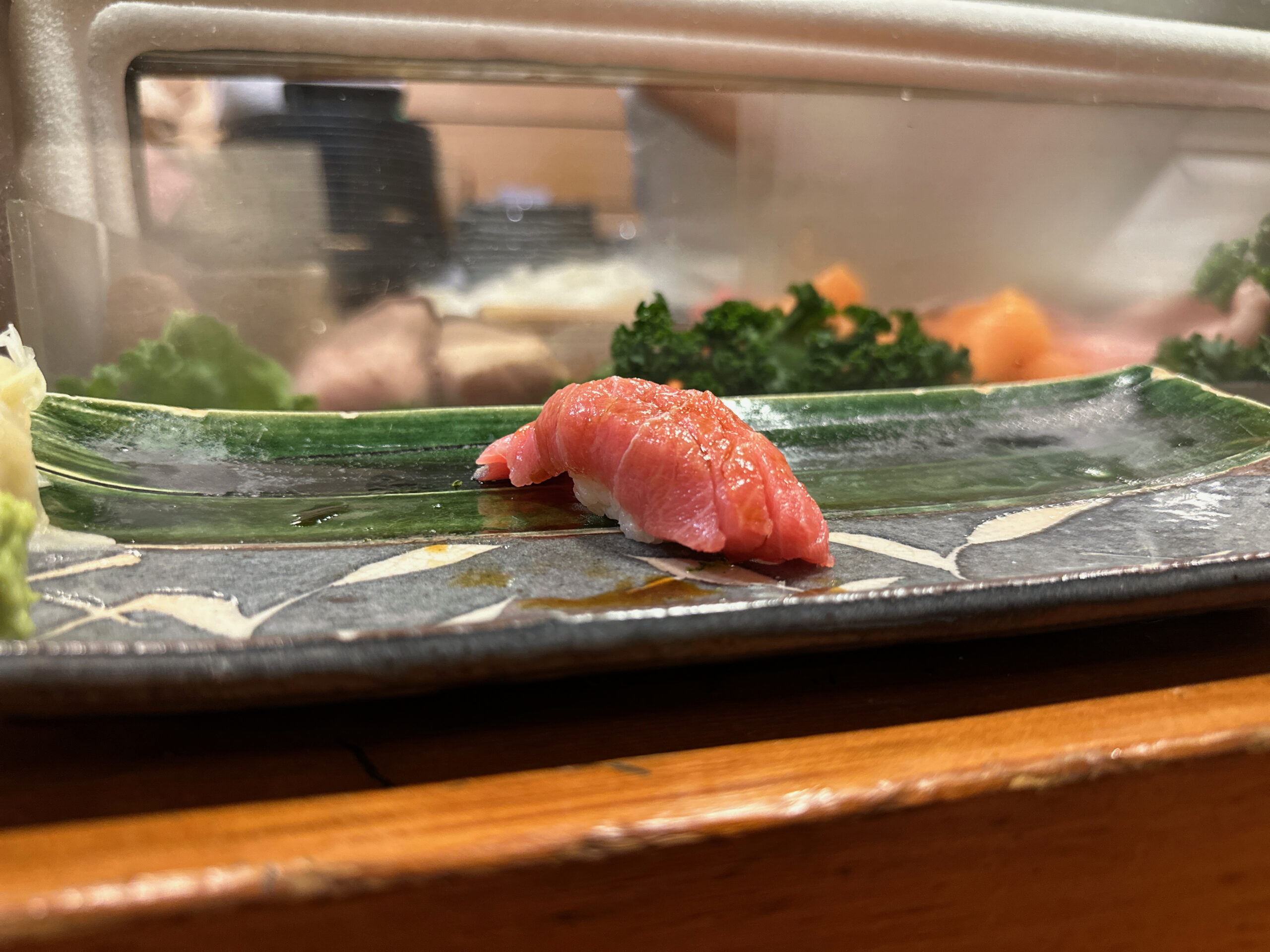
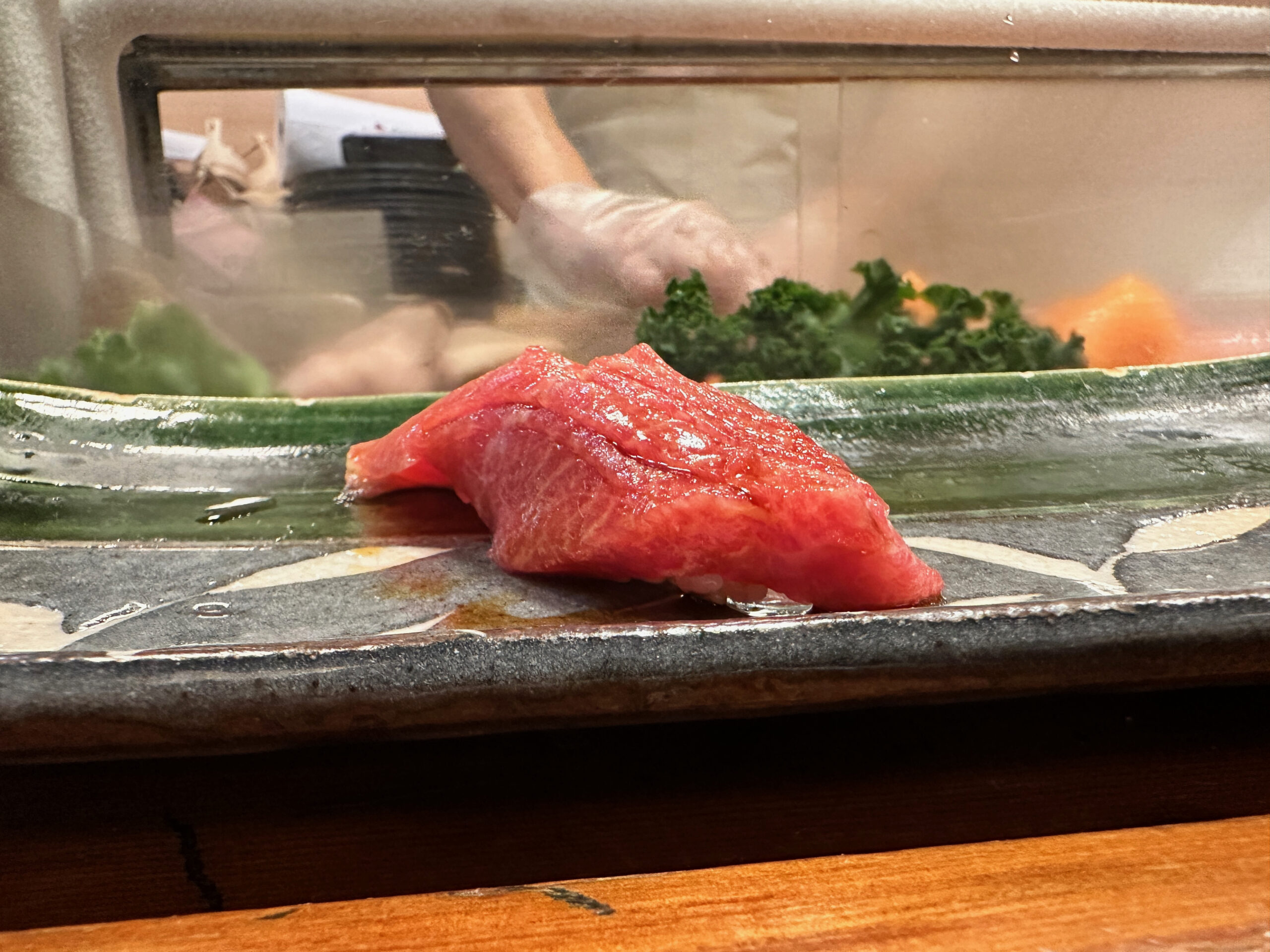
11: O Toro
Hello to the Mirugai
If you’re a sushi addict that’s ever dined with a non-zealot, you’ll know what you usually happens when the kai (shellfish) start coming. Particularly any clams. It’s not just the taste that’s acquired, but the texture as well. That texture is usually why technically savvy sushi craftsman will make incisions in the Neta. Not just for looks, but also malleability as the nigiri is formed. Mirugai (giant clam), a traditional Edomae ingredient, is Exhibit A.
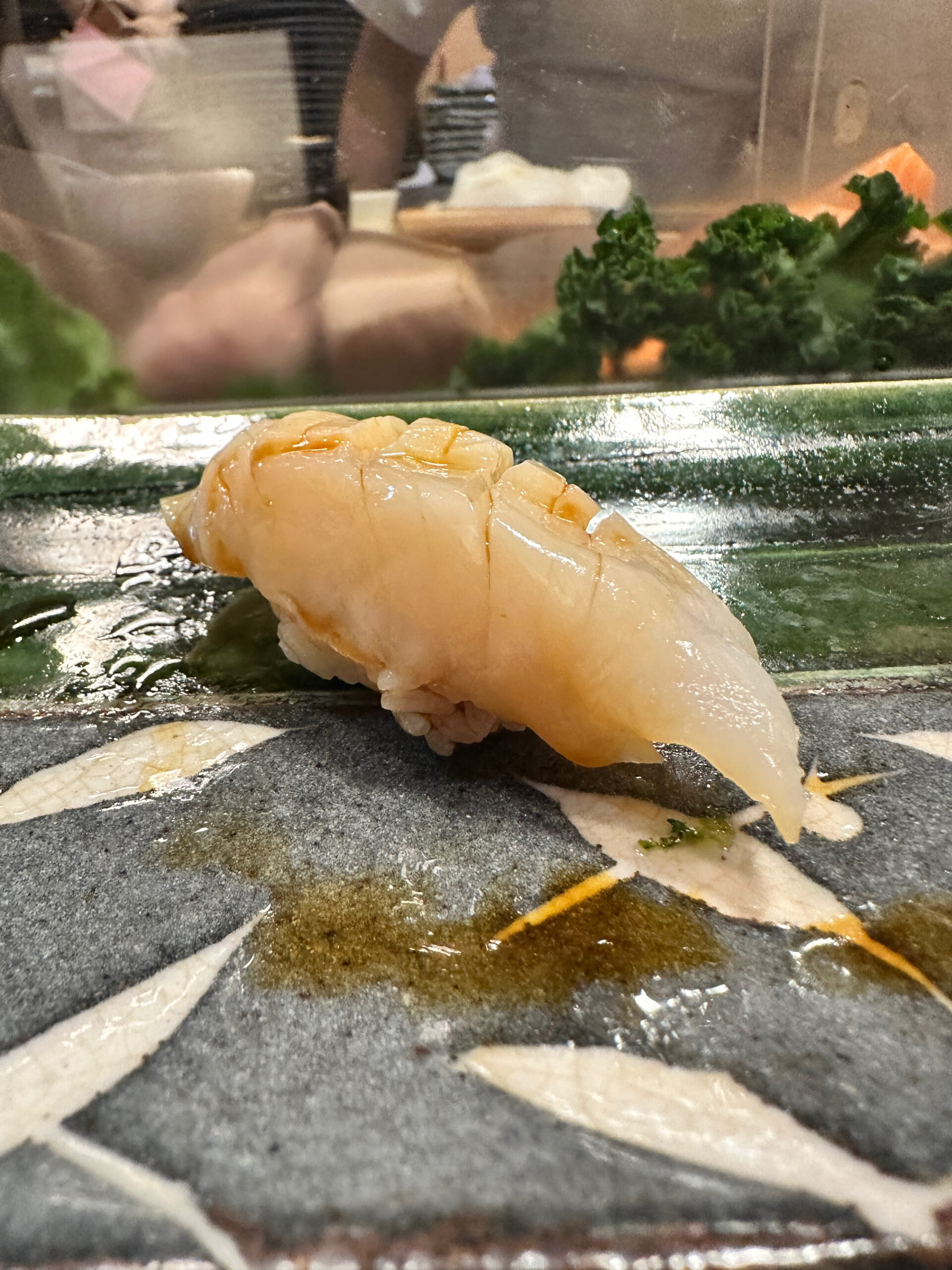
12: Mirugai
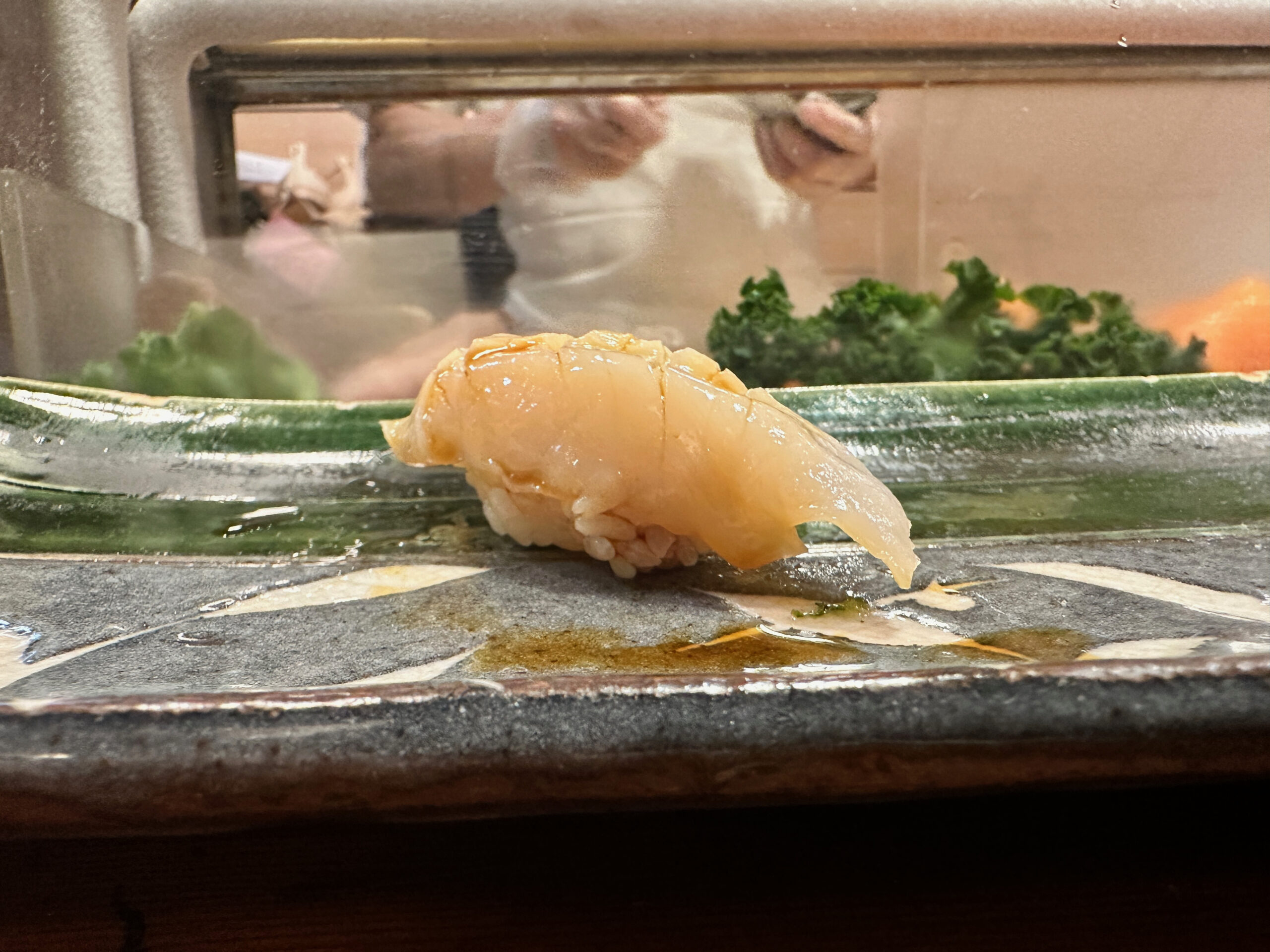
Another angle of the Mirugai
And I have to talk about the fresh octopus
Nama Tako (fresh octopus) is another rare sight on New York sushi menus. If we’re going to get deep, that’s probably symptomatic of a broader issue. Far too many sushiya love the same stewed style of tako – you may see it called madako. And that’s fine. I love it. But I also love changing things up.
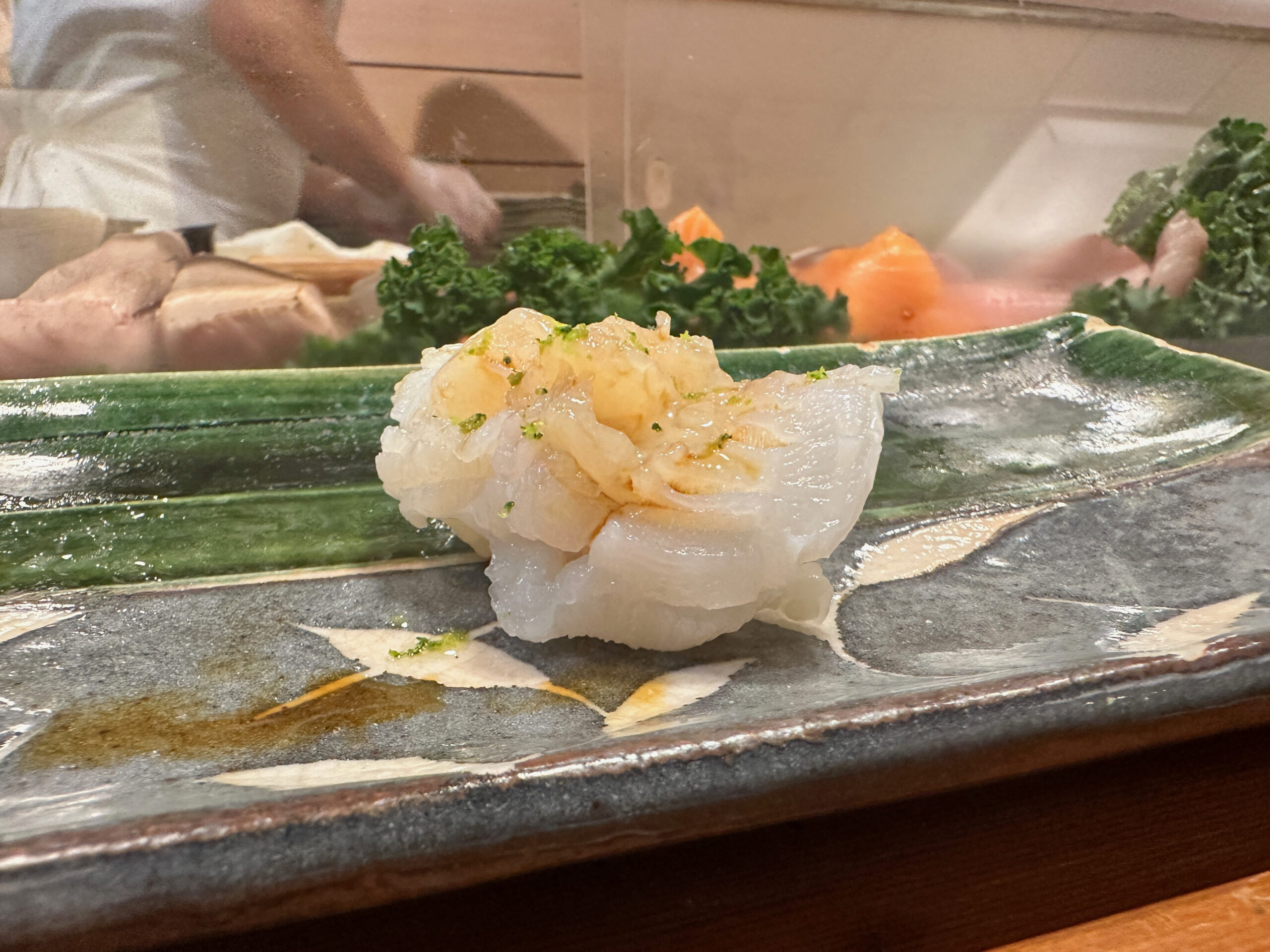
13: Nama Tako (raw Octopus)
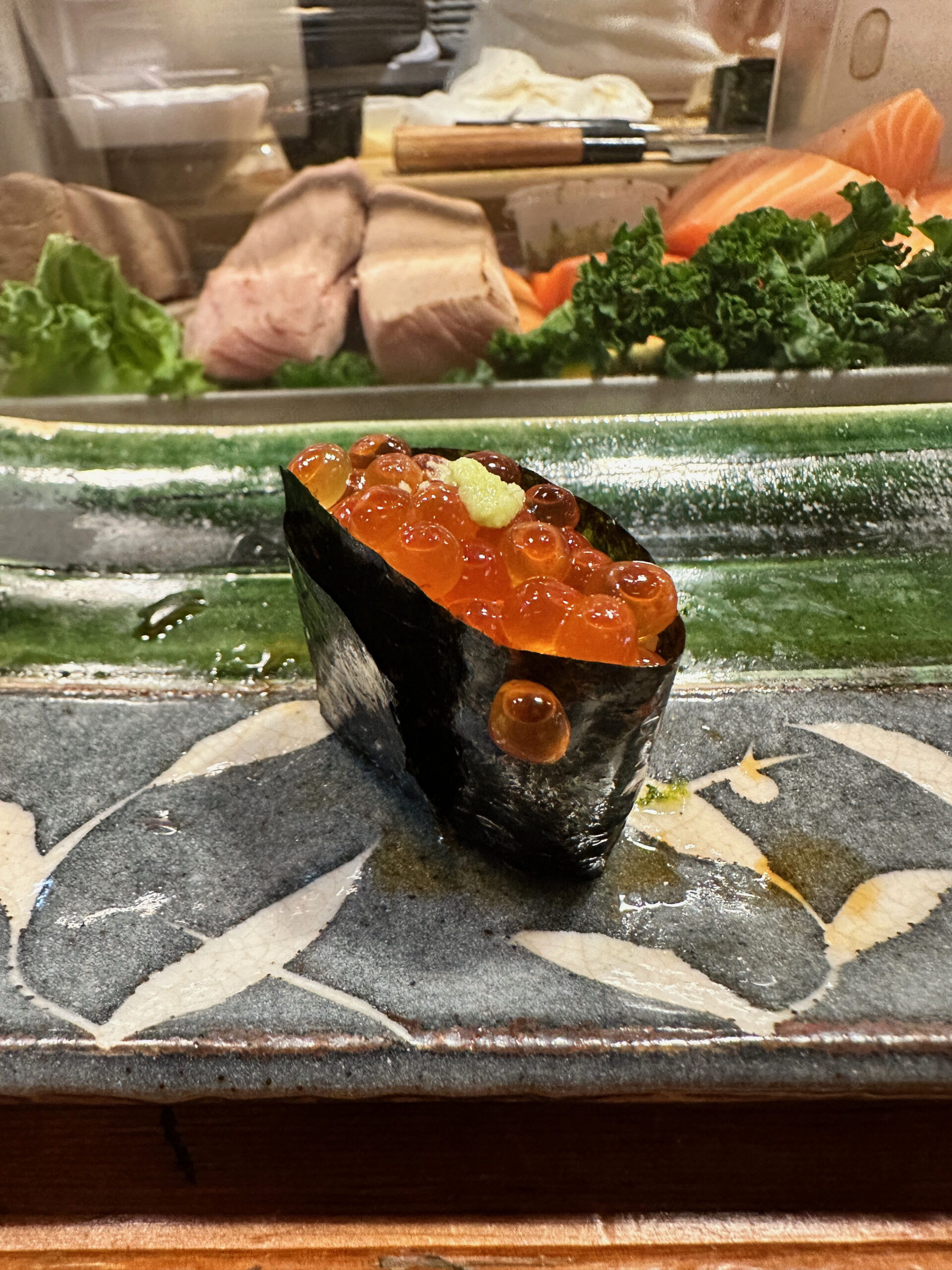
14: Ikura

15: Uni
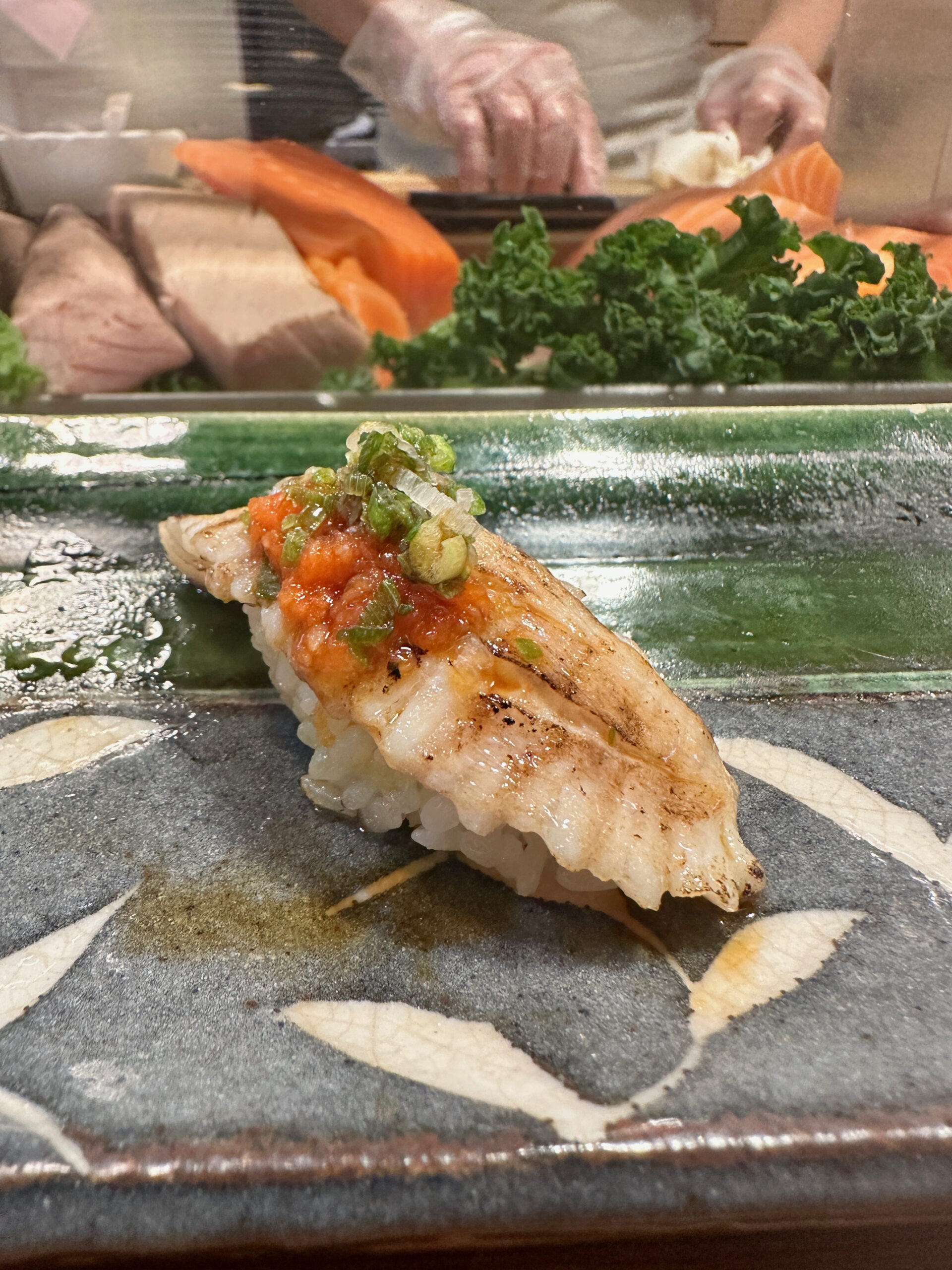
16: Engawa
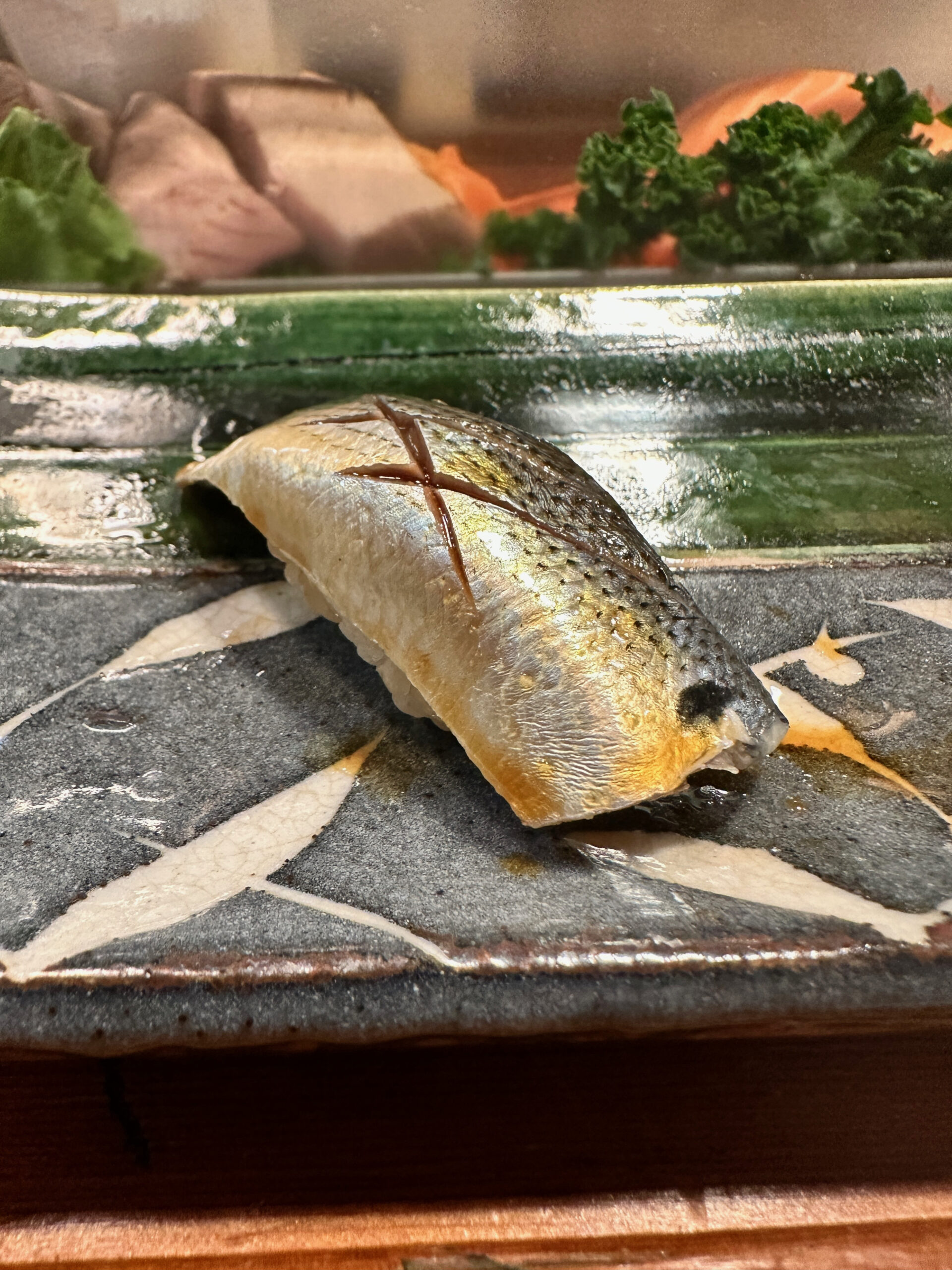
17: Kohada
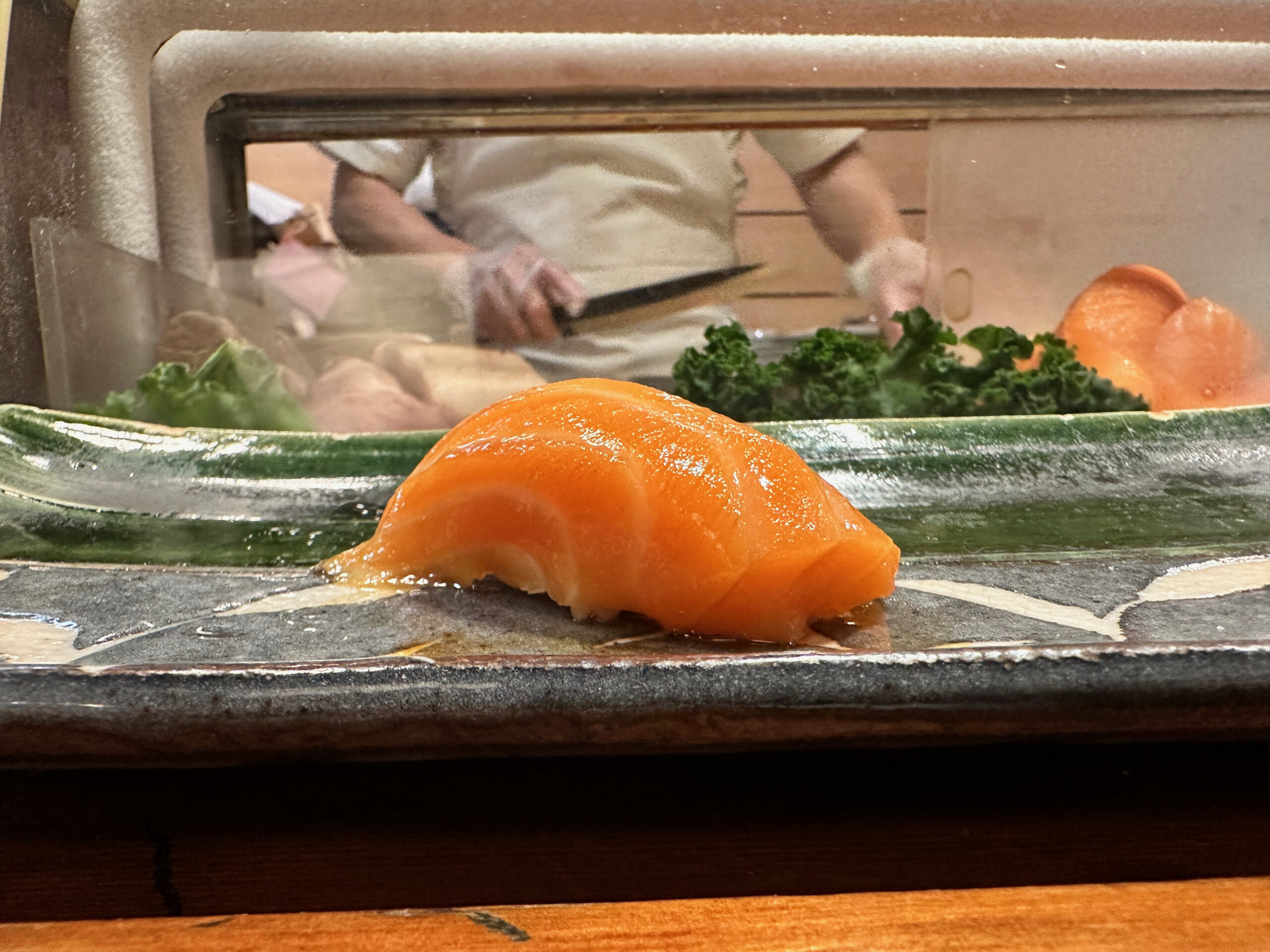
18: King Salmon
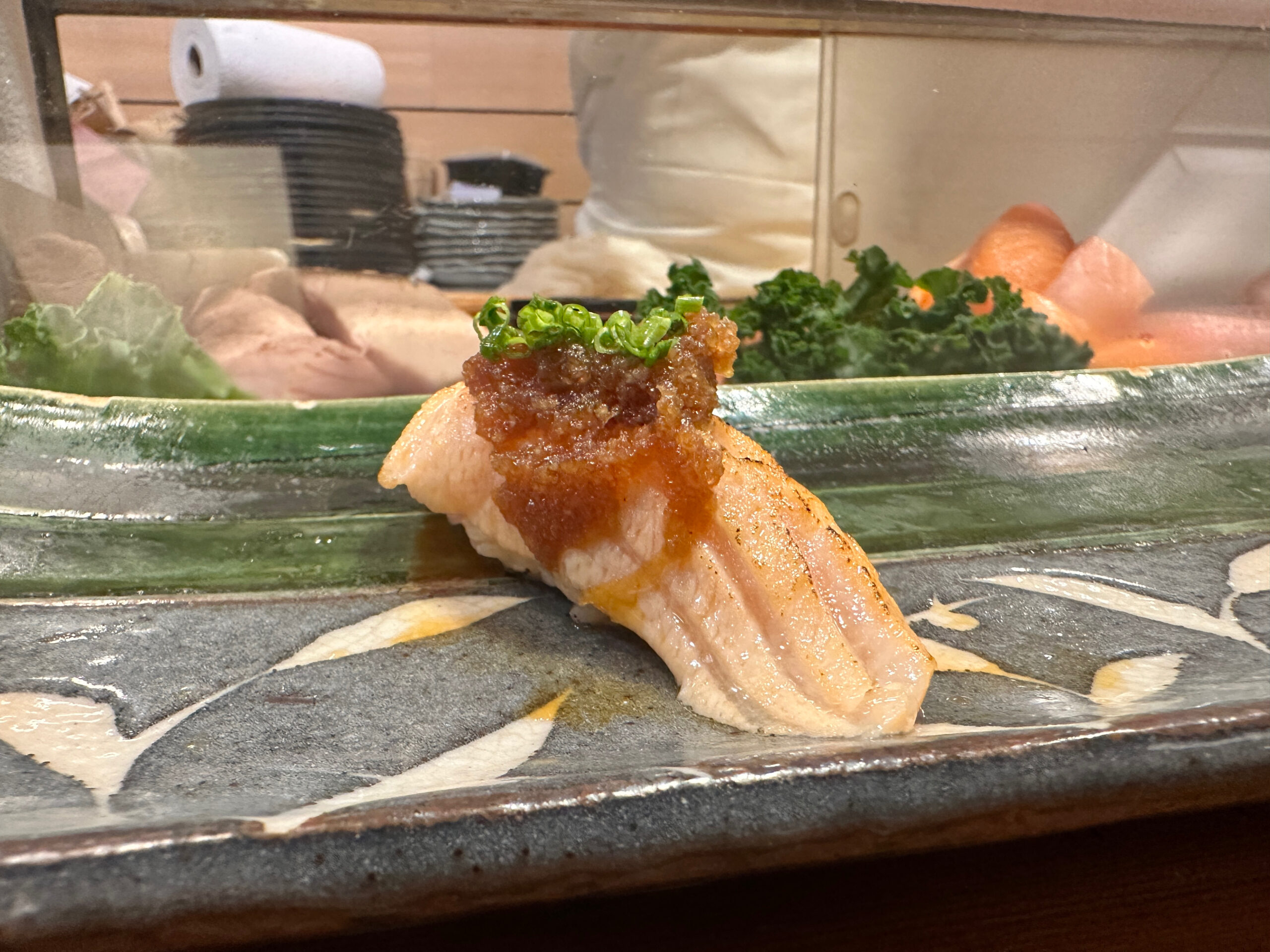
19: Salmon Belly Aburi
The bill came to $190 per person plus tip
Pricy but not awful given the variety, quantity and quality (Hatsuhana’s Shari is excellent).
More importantly, you can’t tell the story of New York City sushi without Hatsuhana. Fortunately, if a recent visit is any indication, this is a George RR Martin tale. Unfinished and many more chapters to be written.
Recommended.
